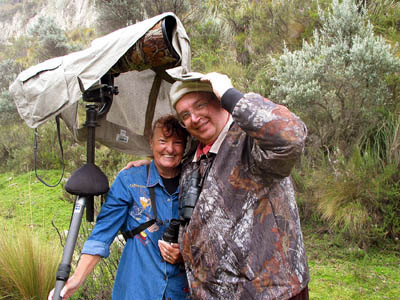Kormendy
Well known for his work on supermassive black holes in galactic nuclei, John Kormendy has done substantial work in other areas as well, notably the study of galactic bulges, the evolution of elliptical galaxies, and dark matter halos of galaxies.
Born in Austria, John has long been interested in the sciences. As a teenager growing up in eastern Canada, he performed chemistry experiments in his basement, trying -- for example -- to make nitroglycerine. His efforts were only partly successful, because he had no centrifuge to purify the reaction products. "I had to spin a test tube around my head on a string. So I never succeeded in making pure nitroglycerine; I could never get it to explode, the most it would do is ‘whoosh' like a blowtorch. Maybe this wasn't entirely a bad thing."
Although interested in chemistry, biology, astronomy, and other natural sciences, John gradually focused more and more on astronomy. While in high school, he had an observatory with a roll-off roof and an eight-inch telescope that he assembled out of prefabricated parts. By the time he enrolled at the University of Toronto's Honors Math, Physics and Chemistry program, he was clearly headed for a career in astronomy.
From Plates to Pixels
John's career has bridged a number of transitions in the field of astronomy. None has been as important, he says, as the change from photographic plates to electronic light detectors. He was one of the last generation of students to carry out his doctoral thesis using photographic plates. Most of these observations were made on the Mt. Wilson 100-inch Hooker Telescope. Soon thereafter, he was introduced to electronic detectors during a postdoctoral fellowship at Kitt Peak National Observatory near Tucson. These provided much more sensitive and reliable measurements than did photographic plates.
John's career has also encompassed a wide range of extragalactic research areas. While continuing to work on black holes and dark matter halos, in recent years he has ramped up another long-term interest, namely the gradual evolution of disk galaxies as they are rearranged by the gravitational effects of bars. He has just completed a major review article on this subject for the Annual Review of Astronomy and Astrophysics. He also continues a long-term program to study the formation and evolution of elliptical galaxies. Recently, research scientist Mark Cornell and proto-graduate student David Fisher have joined both of these projects.
Bird Photography, and Opera, Too
Outside of his astronomical research, John's interests range from travel and photography to scuba diving and bird watching. Birding, in particular, has become a major passion. John and his wife Mary have now birded widely in the USA, including Hawaii, as well as Canada, Costa Rica, Panama, Brazil, Ecuador, Australia, and Europe. Another long-term passion is opera; his personal favorite is a March 1983 production by the New York Metropolitan Opera of Don Carlo by Giuseppe Verdi.
John Kormendy Professor at The University of Texas at Austin Curtis T. Vaughan, Jr. Centennial Chair In Astronomy, The University of Texas at Austin Ph.D., Astronomy, California Institute of Technology B.S. Honors Mathematics, Physics and Chemistry (Astronomy Division) University of Toronto


